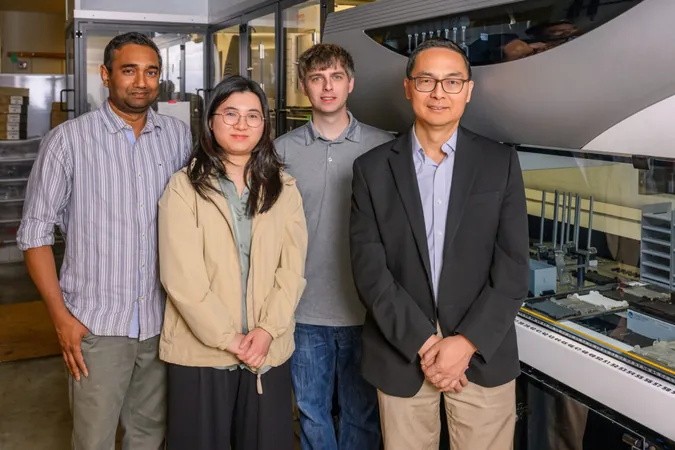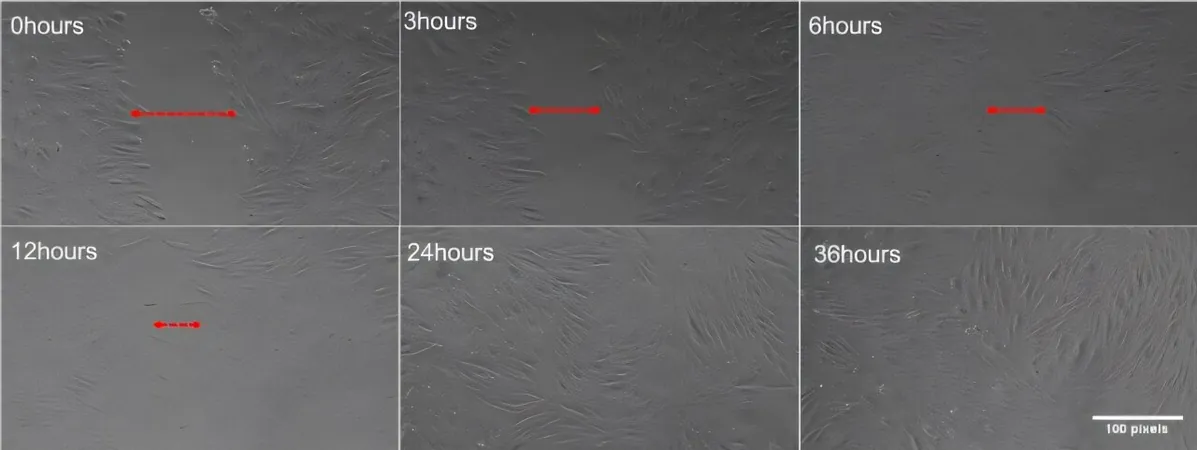
Revolutionizing Enzyme Design: AI and Robotics Team Up for Incredible Discoveries!
2025-07-01
Author: Arjun
In an exciting breakthrough from the University of Illinois Urbana-Champaign, researchers have harnessed the power of artificial intelligence, automated robotics, and synthetic biology to transform the performance of vital industrial enzymes—ushering in an era of efficiency that could revolutionize various sectors!
AI Meets Synthetic Biology for Major Improvements
Under the leadership of Professor Huimin Zhao, a renowned figure in chemical and biomolecular engineering, this groundbreaking study published in Nature Communications aims to tackle the limitations of enzyme usage in energy production, pharmaceuticals, and even everyday products like laundry detergents.
"Enzymes have massive potential, but their widespread implementation has been constrained by efficiency and specificity issues," noted Zhao. "Our innovative technology paves the way to overcome these challenges effectively."
Unlocking the Secrets of Enzyme Improvement
Enzymes play crucial roles in biological processes by facilitating vital chemical reactions. However, pinpointing the right mutations to enhance their performance can feel like navigating a minefield. Zhao explained that improving enzyme functionality is tough due to the complex interplay of multiple synergistic mutations that need to be identified.
To address these hurdles, Zhao's team previously introduced an AI model that predicts enzyme functions based on their molecular sequences. Their newest work elevates this approach, enabling the AI to forecast specific modifications that could enhance performance.
AI's Limitless Potential
"The number of possible variations in a single enzyme exceeds the number of atoms in the universe!" exclaimed researcher Nilmani Singh. With this mind-boggling scale, the AI tool smartly crafts a more manageable library of promising variant combinations, steering clear of random attempts.
The Birth of a 'Self-Driving Lab'
But it doesn't end there; the researchers have integrated their AI with robotics at the iBioFoundry, a cutting-edge facility specializing in rapid engineering of biological systems. This synergy marks a move toward an autonomous lab capable of designing, producing, and testing proteins all on its own!
Stephan Lane, iBioFoundry's manager, shares, "Our vision is to create a self-driving lab: one that not only designs proteins but also builds and tests them in a continuous loop, all controlled by AI algorithms and advanced robotics."
Staggering Successes in Enzyme Performance
This ingenious method yielded groundbreaking results, enhancing two pivotal industrial enzymes exponentially. One enzyme, which boosts nutritional content in animal feed, experienced an astonishing 26-fold increase in activity! Meanwhile, another catalyzing agent saw a 16-fold improvement in activity, coupled with an astounding 90-fold increase in substrate preference—meaning it precisely targets molecules without interference.
A Vision for the Future
Zhao emphasized that while they showcased two enzymes, their methodology is broadly applicable. "We only need a protein sequence and an assay, and we aim to replicate this success across numerous enzymes!"
Looking ahead, the team is committed to refining their AI models and enhancing laboratory equipment to accelerate the synthesis and testing processes. They are also developing a user-friendly interface that allows researchers from diverse backgrounds to engage with this powerful tool simply by typing their needs in plain English.
"Our goal is to democratize access to this technology for scientists who may not have advanced programming skills," said graduate student Tianhao Yu, co-author of the study. With such accessible innovations, the future of enzyme enhancement—and consequently, advancements in drug development, energy solutions, and technology—looks brighter than ever!
Behind the Breakthrough
This transformative research was made possible with support from the National Science Foundation and the U.S. Department of Energy.



 Brasil (PT)
Brasil (PT)
 Canada (EN)
Canada (EN)
 Chile (ES)
Chile (ES)
 Česko (CS)
Česko (CS)
 대한민국 (KO)
대한민국 (KO)
 España (ES)
España (ES)
 France (FR)
France (FR)
 Hong Kong (EN)
Hong Kong (EN)
 Italia (IT)
Italia (IT)
 日本 (JA)
日本 (JA)
 Magyarország (HU)
Magyarország (HU)
 Norge (NO)
Norge (NO)
 Polska (PL)
Polska (PL)
 Schweiz (DE)
Schweiz (DE)
 Singapore (EN)
Singapore (EN)
 Sverige (SV)
Sverige (SV)
 Suomi (FI)
Suomi (FI)
 Türkiye (TR)
Türkiye (TR)
 الإمارات العربية المتحدة (AR)
الإمارات العربية المتحدة (AR)